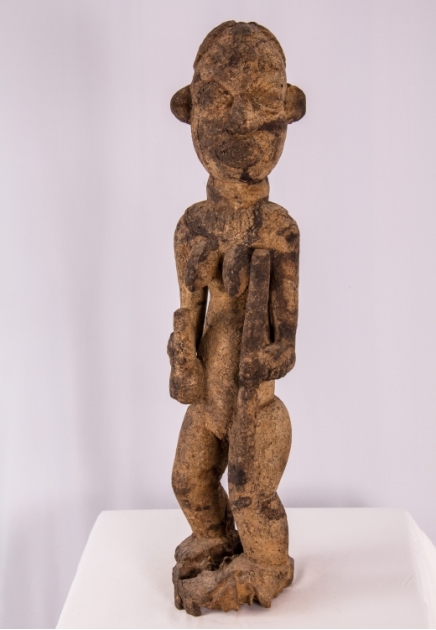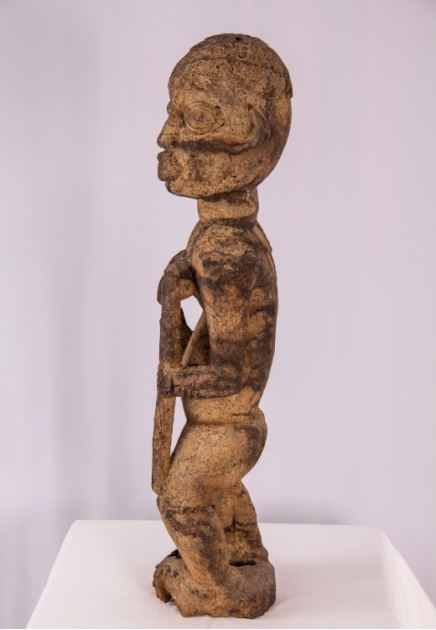Female Royal Commemorative Portrait
This piece is not really a portrait in the Western sense. The image is a stereotype, traditional throughout Africa, bearing no resemblance to the individual it represented . As in the other kingdoms in the grassland, the Fon (fawn, king, chief) and other members of the royal dynasty must have their portraits made by a sculptor during their lifetime, to commemorate them after death. These would serve as markers of the family dynasty, further enhancing the ancestor cult. Although the royal identity of the male statue is not in doubt, for it is carved before the ruler's death, the particular identity of the female model is often ambiguous. The female figure could portray many characters of the royal family, such as the queen mother, the queen - first among other wives, the first to become pregnant, or the one having many children, thus playing an essential role in the dynasty, confirming the Fon's virility and ensuring the fertility of the entire kingdom. But the royal female figures of Bangwa are never carved as pregnant, only as maternal figures . Bangwa art is famous for its dynamic pose which deviated from the classic symmetrical stance with stiff and static formality. This figure's head is turned slightly to the left, and her feet are slightly turned to the right so as to better conform to the round base contour. This particular female figure exhibits royal masculine attributes: her left hand holds a long pipe, believed to be a staff of office and in her right she holds the neck of a calabash of palm wine. The carved bipartite element atop her head may recall the woven and knotted cap worn by rulers or important dignitaries, or it may be a coiffure arranged in the lozenge form, characteristic of the period. .As a royal queen, she is adorned with a typical collar or a necklace, carved in relief, and on her left wrist are four carved bracelets. Her face is of typical Bangwa style – large, bulging almond eyes, open oval mouth revealing teeth, ears projecting from her head and a prominent forehead. That this artifact was an ancestral receptacle appears likely from the application of libations and various medicinal substances to its surface (LaGamma ), which also explains the encrusted patina. This figure suffers badly from erosion.
P. Harter, Royal commemorative figures in Cameroon Grassland, African Arts, 1990, p.70-77; A. LaGamma, Eternal Ancestors, 2007, p.122.





